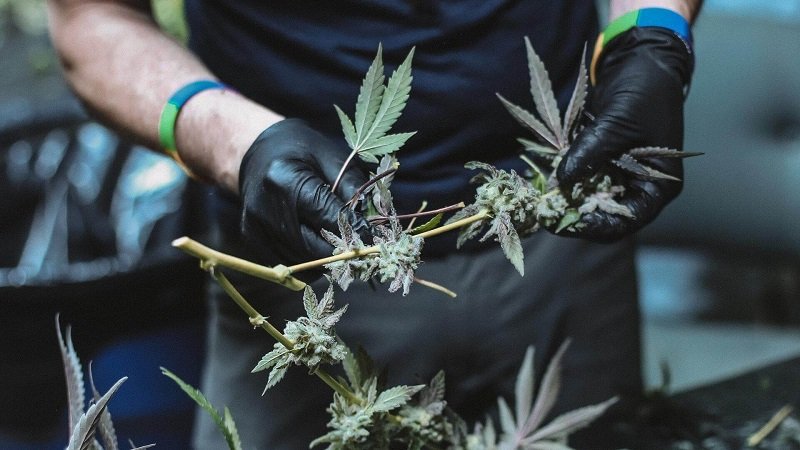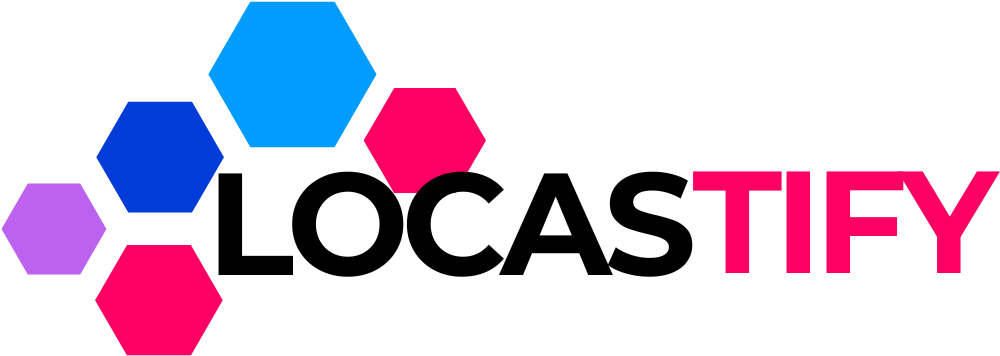As agriculture evolves, so too must the methods growers use to stay efficient, sustainable, and profitable. The world of horticulture has been transformed by innovation, blending age-old wisdom with smart technology. Whether you’re a commercial farmer, a greenhouse enthusiast, or a backyard grower, understanding the top modern horticulture techniques can put you ahead of the curve.
Here’s a detailed breakdown of the top 10 modern horticulture practices every grower should consider in 2025.
How Precision Agriculture Is Revolutionizing Horticulture in 2025
Precision agriculture (PA) uses advanced data and technology—like GPS mapping, drones, soil sensors, and AI—to optimize farming decisions. This approach helps growers make smarter choices about irrigation, fertilization, and pest control.
Key Benefits of Precision Agriculture:
- Efficient resource use – Targeted water and nutrient application
- Reduced input costs – Less waste, more yield
- Higher crop quality – Early detection of disease and nutrient deficiencies
Example:
In California’s Central Valley, almond growers have cut water use by 20% by integrating soil moisture sensors and drone imagery for irrigation scheduling.
Why Soilless Cultivation Is a Game-Changer for Commercial Growers
Soilless systems like hydroponics, aeroponics, and coco coir-based setups have become the go-to for many growers looking to reduce soil-borne diseases and maximize control over nutrient delivery.
Advantages of Soilless Cultivation:
- Faster growth rates
- Cleaner produce
- Space-efficient systems ideal for urban farming
These techniques are especially popular in greenhouse settings and indoor farms, where environmental conditions can be fully controlled.
Drip Irrigation vs. Traditional Watering: Which Saves More and Grows Better?
Water is a precious resource, and drip irrigation is one of the most efficient watering systems available. Instead of flooding fields, water is delivered drop by drop directly to the plant roots.
Why Drip Irrigation Wins:
- Saves up to 70% more water than overhead sprinklers
- Minimizes weed growth by targeting only the plants
- Reduces risk of fungal diseases caused by wet foliage
Stat: According to the UN’s FAO, drip irrigation can increase crop yields by 20–90% compared to traditional methods.
The Rise of Vertical Farming: Grow More with Less Space
Vertical farming involves growing crops in stacked layers—indoors or outdoors—using LED lighting and controlled environments.
This method is perfect for urban centers with limited space. Companies like AeroFarms and Plenty have proven vertical farming can produce more food per square foot than traditional fields.
Why Growers Love Vertical Farming:
- Year-round harvests
- 95% less water usage
- Fewer pests and diseases
Hydroponics vs. Aquaponics: Which Sustainable Method Should You Try First?
Both hydroponics and aquaponics offer soilless growing, but aquaponics takes it a step further by integrating fish farming (aquaculture) into the system.
Comparison Table:
| Feature | Hydroponics | Aquaponics |
| Medium | Nutrient solution | Fish waste water |
| Maintenance | Low | Moderate |
| Sustainability | High | Very High |
| Initial Cost | Moderate | High |
If you’re a beginner, hydroponics is easier to manage. But if you’re aiming for a closed-loop, sustainable system, aquaponics is worth the effort.
How Integrated Pest Management (IPM) Protects Crops Naturally
Integrated Pest Management (IPM) isn’t about eliminating pests entirely—it’s about managing them smartly.
Key Strategies in IPM:
- Monitoring pest populations with traps and sensors
- Releasing natural predators like ladybugs or nematodes
- Using targeted biological or organic sprays
IPM minimizes chemical use, protects pollinators, and builds long-term plant resilience.
Smart Greenhouses Explained: Sensors, AI, and Automation in Modern Farming
Today’s greenhouses are more than just glass structures. Smart greenhouses use sensors to monitor temperature, humidity, CO₂ levels, and even plant stress.
Technologies Used:
- AI algorithms for climate control
- IoT sensors for real-time alerts
- Automated irrigation and ventilation systems
Growers can even control greenhouse functions from their smartphones, ensuring optimal conditions 24/7.
LED Grow Lights and Their Role in Year-Round Horticulture
Unlike traditional lights, LED grow lights can be tuned to specific wavelengths—enhancing photosynthesis and accelerating plant growth.
Why LEDs Matter:
- Use up to 60% less energy
- Emit low heat, reducing fire risk
- Enable indoor and vertical farming
Many growers use a mix of blue (growth phase) and red (flowering phase) spectrums to customize lighting to each plant’s needs.
Controlled Environment Agriculture (CEA): Future-Proofing Your Crop Yield
CEA combines all the above methods—soilless cultivation, climate control, smart irrigation, and AI—to create an optimized environment for plants.
CEA Advantages:
- Consistent quality and supply
- Pest and disease isolation
- Less reliance on seasonal changes
It’s not just the future—it’s already being implemented by startups and large-scale farms alike, especially in regions with harsh climates.
Organic Mulching Techniques That Actually Boost Soil Health
Organic mulching involves placing natural materials—like straw, compost, or bark—around the base of plants.
Benefits:
- Improves soil structure and moisture retention
- Suppresses weeds without chemicals
- Adds nutrients back into the soil as it breaks down
Pro tip: Use chopped leaves or grass clippings for a free, nutrient-rich mulch solution.
What Is the Best Modern Horticulture Technique for Small Growers?
For small-scale growers, drip irrigation combined with organic mulching offers the best return with minimal setup. If space allows, hydroponics in a small greenhouse can also be highly productive.
Quick Picks for Small Growers:
- Drip irrigation kits (easy to install)
- Raised beds with compost mulch
- DIY hydroponic kits
Look for modular and scalable systems that grow with your operation.
Can You Combine Traditional and Modern Horticulture? Here’s How
Absolutely. Many of the best growers blend both worlds:
- Use composted manure (traditional) in raised beds with drip irrigation (modern)
- Rotate crops but monitor soil nutrients using digital probes
- Manually weed but use IPM strategies to control larger pests
This hybrid approach allows growers to stay grounded in sustainability while benefiting from tech-powered efficiency.
5 Common Mistakes Growers Make When Adopting New Techniques
- Skipping the Research – Not all tech suits every environment.
- Over-automation – Losing the human touch can lead to crop mismanagement.
- Ignoring soil health – Even in hydroponics, root care is essential.
- Budgeting poorly – High initial costs without proper ROI planning.
- Lack of training – Tech is only as good as the user operating it.
Avoiding these mistakes can save thousands and lead to better harvests.
Cost vs. ROI: Is Investing in High-Tech Horticulture Worth It?
While some innovations come with steep price tags, most modern horticultural investments pay off quickly in reduced labor, fewer crop losses, and increased yield.
Example ROI Timeline:
- Drip irrigation: Pays for itself within 1–2 seasons
- LED lights: Break even in 18 months with consistent use
- Smart greenhouse sensors: Payback within 2 years
Look for government grants or agri-tech funding programs that support innovation.
How to Choose the Right Horticulture Technology for Your Crop Type
Every crop has different requirements.
Quick Guide:
| Crop Type | Recommended Tech |
| Leafy Greens | Hydroponics, Vertical Farming |
| Tomatoes/Peppers | Drip Irrigation, Smart Greenhouse |
| Strawberries | Soilless Culture, IPM |
| Herbs | LED Lights, Hydroponic Towers |
Research crop-specific case studies to align your technology stack for optimal yield.
Top Apps and Tools That Help Modern Growers Thrive
Here are a few must-have digital tools for 2025:
- AgriWebb – Farm management and planning
- Taranis – Pest & disease monitoring with AI
- Arable – Weather, soil, and crop monitoring sensors
- GrowBuddy – Ideal for indoor hydroponic growers
These tools offer cloud-based dashboards, mobile alerts, and even yield prediction models.
The Environmental Benefits of Switching to Modern Horticultural Methods
Modern horticulture isn’t just about yield—it’s also about sustainability.
Environmental Gains:
- Less water usage with drip and hydro systems
- Reduced chemical runoff via IPM and organic methods
- Lower carbon footprint from local indoor farming
These improvements align with global goals like the UN’s Sustainable Development Goals (SDGs).
Case Study: How One Grower Increased Yield 60% with Smart Farming
Meet Sarah, a grower in Texas who transitioned from traditional field farming to a CEA-based vertical setup in 2022. Using:
- LED lighting
- Drip-fed hydroponic towers
- Climate sensors
She boosted her lettuce yields by 60%, cut water use by 80%, and now sells to premium grocery chains.
Is Modern Horticulture Sustainable for the Long Term? Key Insights
The answer is yes—with caveats. Sustainability depends on:
- Responsible tech use
- Renewable energy integration
- Ongoing education
The key lies in choosing scalable, eco-conscious systems that don’t compromise the planet for production.
✅ Conclusion: Embrace the Future, One Technique at a Time
From vertical farming to precision irrigation, modern horticulture techniques offer a path toward higher yields, lower waste, and sustainable food production. Whether you’re just starting or upgrading an existing operation, these techniques can transform how you grow—efficiently, profitably, and responsibly.
✅ Bonus: Quick Summary – Top 10 Techniques Every Grower Should Explore
- Precision Agriculture
- Soilless Cultivation
- Drip Irrigation
- Vertical Farming
- Hydroponics & Aquaponics
- Integrated Pest Management (IPM)
- Smart Greenhouses
- LED Grow Lights
- Controlled Environment Agriculture (CEA)
- Organic Mulching

FAQs:
1. What is the most efficient modern horticulture technique for small-scale growers?
For small-scale growers, drip irrigation combined with organic mulching offers the best efficiency and affordability. These techniques reduce water waste, improve soil health, and require minimal setup—making them ideal for home gardens and compact farms.
2. How does vertical farming benefit urban growers?
Vertical farming allows urban growers to maximize space by growing crops in stacked layers using LED lighting and controlled environments. It supports year-round production, reduces transportation costs, and uses up to 95% less water than traditional farming methods.
3. Is hydroponics better than traditional soil farming?
Hydroponics can outperform soil farming in controlled environments by offering faster plant growth, fewer pests, and cleaner produce. However, it requires initial investment and technical knowledge. For leafy greens and herbs, hydroponics often yields 30–50% more per cycle.
4. What technologies are used in smart greenhouses?
Smart greenhouses utilize IoT sensors, AI-driven climate control, automated irrigation systems, and mobile monitoring apps. These tools help growers maintain optimal growing conditions and reduce labor while improving crop quality and consistency.
5. Can modern horticulture techniques reduce environmental impact?
Yes, many modern horticulture techniques—like precision agriculture, CEA, and IPM—significantly reduce environmental impact by conserving water, minimizing chemical use, and enabling local food production. These innovations contribute to long-term agricultural sustainability.

